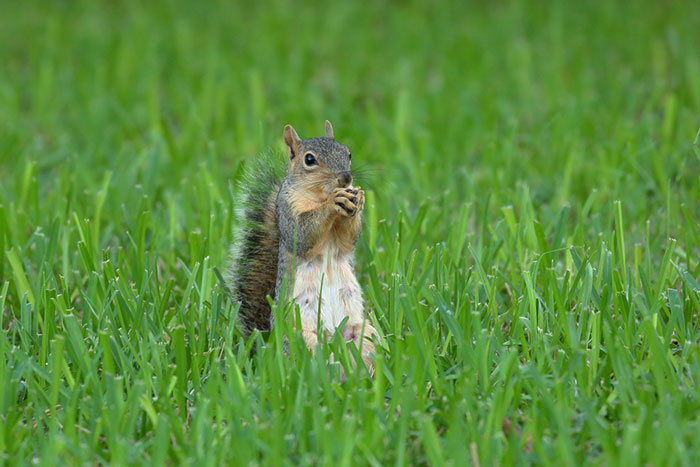In Texas, St. Augustine grass is one of the most popular of the turfgrass, or carpet grass, varieties. This type of grass does well in the warmer temperatures, and it has a low dense growth habit. That means it gets very thick so it feels like a carpet beneath your feet, and it does not grow tall quickly, so you get to mow less frequently.
If you water your St, Augustine grass properly, and feed it the right fertilizers, at the right time, then you will have a beautiful lawn with few weeds.
According to the author, Lisa Bohler, of the Fixin To Texas blog, providing your St. Augustine sod with the right fertilizer, at the right time of year, is the key to having healthy grass.
What Fertilizer to Use
When you feed your St. Augustine grass it is important that you use a fertilizer that contains the right balance of nutrients. Your St. Augustine grass needs one pound of soluble nitrogen for every 1,000 feet of lawn.
When you buy fertilizer the label will have numbers on it, like 15 - 5 – 10, or 10 – 3 – 10. Those numbers refer to the ratio of nitrogen – phosphorus – potassium that the mixture contains. To buy the proper amount of fertilizer you need to divide 100 by the first number that is listed on the label. The label may list the first number as, “ammonium sulfate”, that means nitrogen.
If you are buying 10 – 10 – 10, then you need 10 pounds of that fertilizer for each 1,000 square feet of grass. If you buy a product that is labeled 15 – 5 – 10, then you need to use 6.6 pounds of product on 1,000 square feet.
If your yard has 6,000 square feet and you buy a product with 10 as the first number, then you need 60 pounds of that fertilizer to feed your grass.
Your new sod needs a fertilizer that contains very little phosphorus. When your grass gets an over-abundance of phosphorus then it can become depleted of zinc, and iron.
When to Fertilize
You want to apply the fertilizer in the spring when there is no longer a chance of a frost. This will generally be about three weeks after your grass starts to turn green in the spring.
Then you should continue to fertilize your grass every 8 weeks. There are some fertilizers that contain slow release nitrogen. If you use one of these products you will fertilize every 10 weeks, but you have to increase the amount of fertilizer you use. You will use 1 ½ pounds of soluble nitrogen per 1,000 square feet of lawn.
Stop putting fertilizer on the grass in September and resume your schedule the following spring in late February, or in early March.
